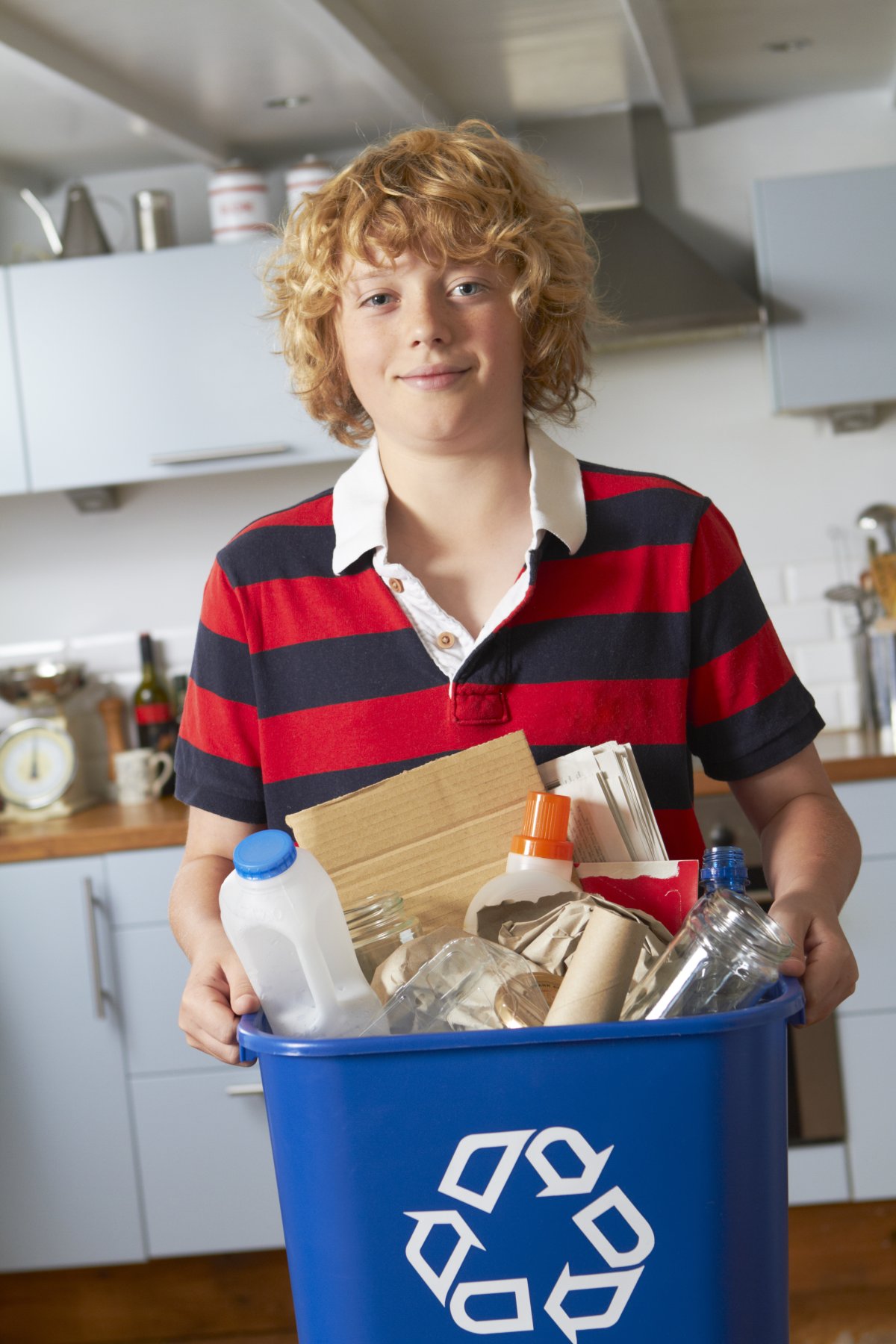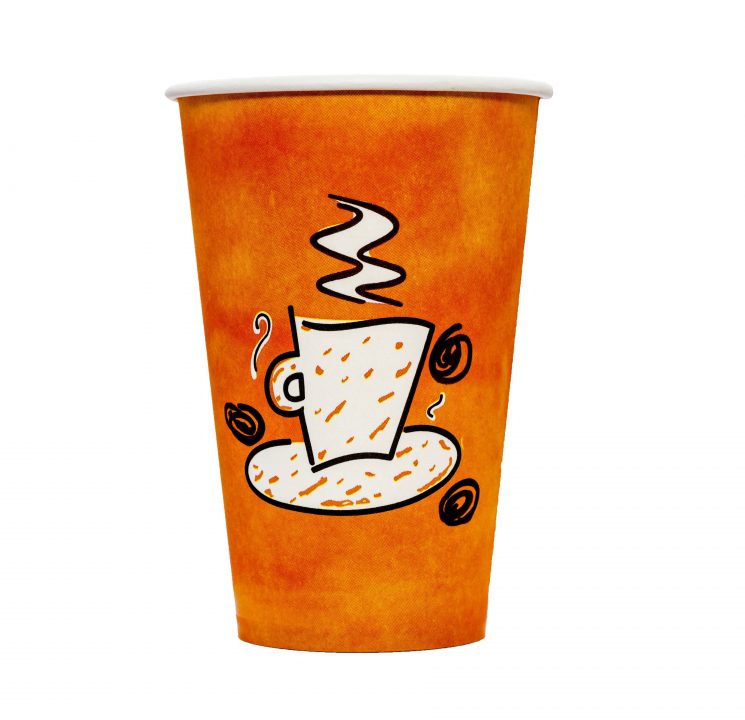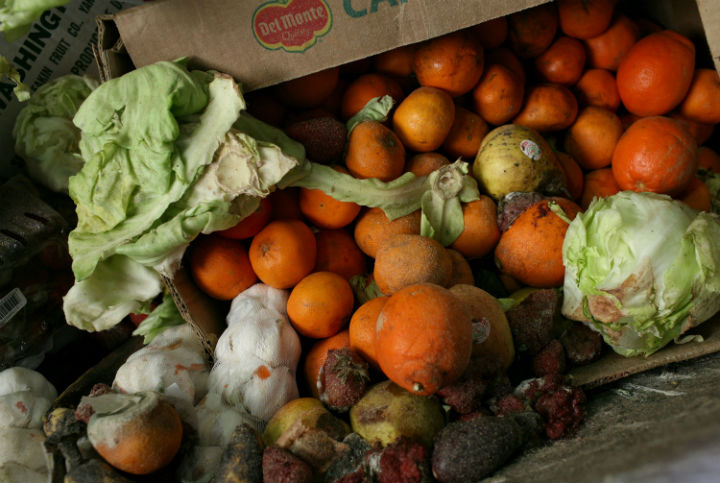We all want to do the right thing when we recycle, but too many of us are throwing the wrong things in our recycling Blue Bins, costing the City of Toronto millions of dollars to get rid of the wrong items that shouldn’t be there.

“In defence of the residents who are trying to participate in the Blue Bin recycling program, in some cases it’s not easy to identify what is actually recyclable,” said Jim McKay, General Manager of the City of Toronto’s Solid Waste Management Services.

“In some cases, I think the residents are trying to do the right thing, but they are actually inadvertently doing the wrong thing.”
How big a problem is it? Toronto collects about 200,000 tonnes of material from Blue Bins every year and about 45,000 tonnes is unacceptable material. That’s almost 25% and the percentage of contaminants is on the rise.
Here are 10 things McKay says people are throwing into their Blue Bins that they shouldn’t be and explains what to do with them instead:
1- Hot and cold beverage cups
Clear plastic cups and lids can be recycled, but coffee cups and containers used for soft drinks cannot be because of the plastic liner and wax coating.
“Coffee cups are a bit of a unique item. They look like they’re just made of paper, and they feel like they’re paper, but they actually have a thin plastic liner,” said McKay.
For now, they go into the garbage, but the city is looking for a viable market to sell these items because of the incredible amount of disposable coffee cups being thrown out every day.
2- Organics / food scraps
Food waste should be going into the Green Bin. Organics and food scraps is one of the recycling program’s biggest problems because when it gets mixed into the recyclables, it actually reduces the quality of the material. For example, when it gets mixed in with paper products, it lowers the value of the paper.
“A lot of people look at recycling as a waste they’re getting rid of. We actually look at it as a commodity that we sell in the marketplace. And just like any other commodity, quality is very important,” said McKay.
3- Containers with food
These are things like yogurt or peanut butter containers where the contents haven’t been consumed or have expired, but they haven’t been cleaned out. Clean out the container, food contents go in the Green Bin and recycle the empty containers.
“As a recyclable product, the food residue has to be removed. Otherwise left over food material may squeeze out part way through the process then we just end up with food residue in the recycling again,” said McKay.
4- Textiles and shoes
Old clothing, sheets, rags and shoes cannot be recycled and should not go in the Blue Bin. There are non-profit organizations that will take your old items for re-use if they are still in good condition. Some will come to your door while others have drop-off points where you can take this material to give them a second life.
“We’re looking at ways and opportunities to help keep textiles, like clothing, out of landfill,” said McKay.
5- Black plastic takeout food containers, plant pots/trays
Although this material is plastic, the optical sensors used at the recycling facility cannot recognize it and separate it from other material.
“The conveyor belt is black and the plastic is black so the sensors in the machinery cannot tell the difference between them. The black stuff just ends up going into the garbage,” said McKay.
6- Propane tanks and cylinders / helium tanks
On occasion, people throw out large propane cylinders used for backyard barbecues, but the smaller ones used for portable stoves at picnics or for camping are commonly found in Blue Bins.
“You use them for a barbecue and you think they are empty, but they still present a pretty significant explosion hazard in the recycling facility,” said McKay.
These are considered hazardous waste so take them to the city’s household hazardous waste (HHW) depots, call the Toxic Taxi or bring them to a Community Environment Day.
7- VHS tapes, cassettes, DVDs, CDs
As we move from an analog to a digital world, obsolete media ends up being tossed in recycling bins, but it should be going into the garbage or donated to someone who still wants it. VHS tapes, in particular, can break open and wrap around recycling equipment, causing damage.
“Right now, unfortunately, they are all garbage. People are getting rid of their VHS collections and it’s surprising how much of that material is ending up in the recycling stream. Hopefully, in the future, that type of material will disappear, but over the next five to 10 years, I’m sure we’ll be seeing a lot of it,” said McKay.
8- Hoses, cords, cables, chains
These items are a major problem because they cause mechanical damage to the sorting equipment at the recycling facility.
“In some cases, they’ll actually burn out electric motors because the cables will stop the motor from being able to turn,” said McKay.
Hoses should go in the garbage if they can’t be re-used and cables and chains, if made from steel, can be taken to the city’s Drop-off Depots to be properly recycled.
9- Medical waste (syringes)
The City gets a lot of syringes at the recycling facility. These should never be put in the Blue Bin or garbage; medical waste needs to be disposed of safely. Many pharmacies will dispose of them for you or you can take them to a HHW depot.
“Most people are aware that they should put them into some kind of container with a lid on it,” said McKay, “But by the time that stuff moves through our recycling facility, those containers will open up and the needles spill all over the place. You can imagine on some of these conveyer belts where we have people sorting through the material by hand, it becomes extremely dangerous.”
10- Tools
People throw hand-held tools away because they are mostly made from metal, but they cannot be recycled.
“If they can be re-used, we prefer people to do that,” said McKay.

“Even though a product has a Mobius loop, that symbol that everyone seems to recognize as meaning “recyclable”, it doesn’t necessarily mean that it’s acceptable in a municipal Blue Bin recycling program. It causes a lot of confusion, not just here in Toronto, but everywhere,” said McKay.
If you’re not sure if something is recyclable or don’t know how to properly dispose of something, go online to www.toronto.ca/recycleright and check the Waste Wizard to find the answer.










